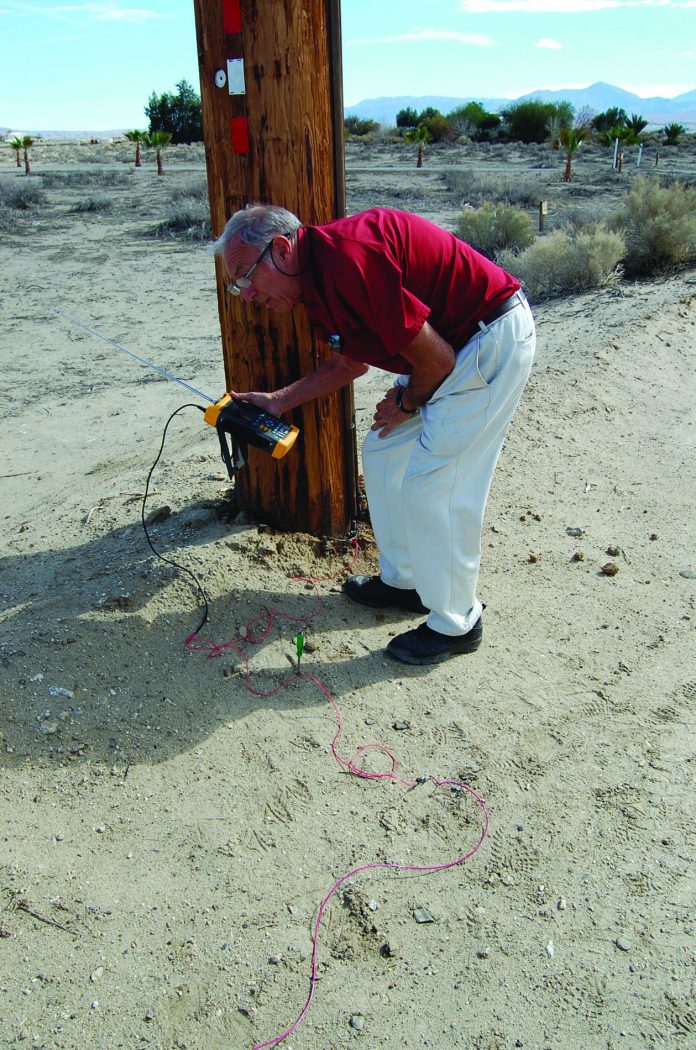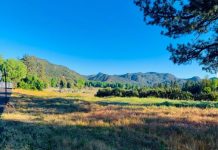68% of Manzanita study families report problems associated with ‘turbine syndrome’
Researchers say funding for study expansion hard to find
By Billie Jo Jannen
For The Alpine Sun
A study currently under way to assess possible health impacts to residents due to wind turbines on the Campo reservation is expected to be finished in the fall — and researchers hope to find the money to expand it into a regional study.
68% of Manzanita study families report problems associated with ‘turbine syndrome’
Researchers say funding for study expansion hard to find
By Billie Jo Jannen
For The Alpine Sun
A study currently under way to assess possible health impacts to residents due to wind turbines on the Campo reservation is expected to be finished in the fall — and researchers hope to find the money to expand it into a regional study.
Lead researcher Arcela Nuñez-Alvarez, Ph.D., of the National Latino Research Center said the numbers, so far “…show some trends that I think deserve more attention.” Preliminary numbers in the small population being studied show that 68 percent of the households are suffering from chronic sleep disorders – an oft-mentioned complaint of people who live near turbines – and the same percentage reported emerging respiratory problems.
By comparison, respiratory illness in Imperial Valley – well known for its poor air quality — showed up in 30 percent of households, Alvarez said.
As reported previously in The Alpine Sun, tribal members have revealed a host of illnesses, including asthma, cancers, heart problems, inability to sleep and concentrate, and an increase in behavior problems among children. These match reports of turbine neighbors from around the world in a set of problems that have come to be informally dubbed “turbine syndrome.”
The research team, which operates under CSU San Marcos, is currently conducting additional interviews with families who live along the Manzanita-Campo border where the turbines are located, Alvarez said. The next step is to test air, water and soil to identify any factors other than the turbines that could cause or contribute to the kinds of illnesses being reported.
Study participant Ginger Thompson, a tribal member and employee of Southern Indian Health said she was treated for a rare kidney cancer and suffers from chronic sleep problems. Her granddaughter, who lives with her, has developed chronic, deep stomach pain that doctors can find no specific cause for. “A lot of the people here have some sort of stomach problem,” Thompson said.
Thompson, herself, is unable to sleep the night through since the turbines started operating, and wakes up three to four times a night. Her symptoms, and those of her granddaughter, disappear completely when they take their annual two-week trip to visit out-of-state relatives.
Thompson said she lives within ¼ mile of the Campo’s Kumeyaay Wind project, erected in 2005, and has no family history of cancer and no indication that she would be susceptible to it: “It was a fluke that they even found it,” she said.
A growing body of complaints points to two possible sources for turbine syndrome: infasound – subsonic sound waves, which have been studied in both the U.S. and Russia as potential weapons of mass destruction – and stray voltage – electromagnetic emissions associated with high voltage installations like power lines and electricity generation plants.
Thompson is not the first to speak publicly of the tribe’s health troubles. The Manzanita tribal government, as well as individual members, has reached out to regional and federal authorities to focus attention on its health problems with limited success.
Tribal Chairman Leroy Elliott wrote a letter to the county last year, asking that approval of the Tule Wind array be delayed until the study is completed: “We are experiencing an inordinate level of health challenges,” he wrote. “Any prior approval of the Tule Wind project will be placing our residents in an unreasonable and increased foreseeable health risk.”
Despite requests from the tribe and others, the BOS approved the county’s portion of the Tule Wind project, which will place up to 123 turbines on over 15,000 acres of public and private land in McCain Valley.
In November, a tribal member, who asked not to be named, attended a Boulevard Planning Group meeting to alert the community to those problems. She said a series of cancers – four stomach cancers and one brain cancer – have cropped up in people who live in a direct line along the Kumeyaay Wind array. Many people in the neighborhood are unable to work due to lethargy and “brain fog,” she said. She, herself, suffers from stomach pain, sleep deprivation and a constant headache that can be relieved only by leaving her home for a protracted period.
Thompson said that high levels of stray voltage were measured at her home when Dr. Sam Milham — a career epidemiologist who has focused on studying the effects of high voltage on human health — measured emissions on and around the Manzanita reservation last year. At that time, Milham reported that the tribe is being subjected to transient voltages a thousand times higher than normal in air and soil.
“We really need answers,” Thompson said. “We were told these turbines would be safe … I don’t think we’re being told everything.”
So far, those answers have not been forthcoming, and multiple large projects, including Shu’luuk Wind, the Campo Band’s proposed 300-acre wind energy expansion. The draft EIS for Shu’luuk was issued last month and the comment period expires Feb 25.
Wind turbine proponents, including SDG&E and San Diego County Department of Health, shrug off health complaints from turbine neighbors — despite noticeable consistency in the health complaints coming from people in other countries that have built them — saying there is no proof that the health problems of turbine neighbors came from the turbines.
Alvarez said that it is unlikely that the Manzanita health study will be considered conclusive proof that turbines menace public health, but it does add to a growing body of evidence that should warrant concern. She said the research center, which specializes in studies of minority communities, is seeking money to conduct follow-up studies on a larger population than the 16 households currently participating in the Manzanita study.
“So far, we haven’t had a lot of luck,” Alvarez said, attributing the lack of interest by funders to a general refusal to see anything wrong with the turbines. That trend, she opined, is the result of a general enthusiasm for technologies perceived to be “green.”
Indeed, large swathes of environmental law and conservation planning have been waved away by federal land management officials to allow thousands of acres of energy development, including Tule Wind and Sunrise Powerlink. The county is assessing an industrial overlay on Boulevard and Jacumba that would negate most of the local land use regulations adopted as the result of the county’s long, expensive and hard-fought general plan update.
The overlay would greatly simplify the permitting process for energy projects, which also receive a hefty tax benefit from the federal government and a pass on some state and federal environmental requirements.
“We’re forgetting to do our due diligence,” Alvarez said of environmental project review on turbine arrays. “They’re skipping a lot of steps. We’re essentially sacrificing entire communities for these massive projects.”
While the size of the current study is small, she added, “It still points to a problem that can’t be reversed.”













